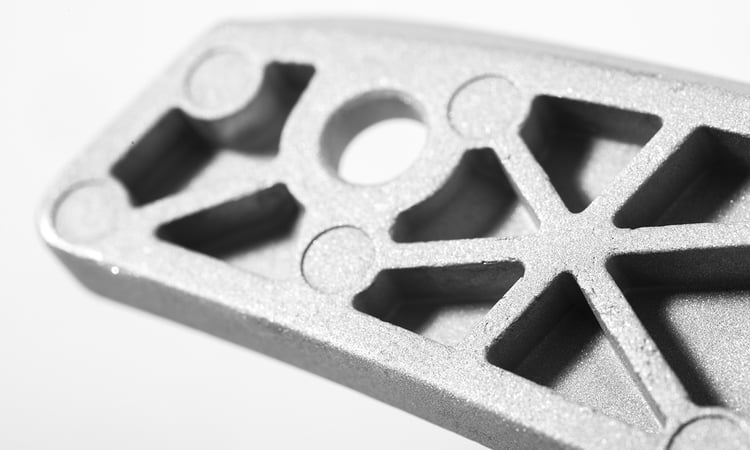As winner of numerous international awards, Bruschi Spa is known for its innovative approach in design and technology. We are glad to share our insights and experiences with the industry members.
Weight reduction: lightweight as a benefit of co-design
In this post we are going to discuss how it is possible to reduce components weight while maintaining their functionality through the use of co-design.
Components’ weight plays an important role in every product production –just think of the possible saving in terms of shipping costs – but it is in the automotive industry that it proves crucial.

Automotive producers are constantly looking for new ways of making lighter vehicles, without having to decrease their size or having to renounce to internal widgets and comfort. The use of lighter components leads to a general lightening and thus to an improved fuel efficiency, besides improving the efficiency of some parts, such as car doors or openable sunroofs.
This is why designing lighter components while maintaining their functional qualities is becoming an ever-more pressing task.
Weight reduction benefits
During product design phase it is possible to detect spots whose excessive thickness could cause a superfluous increase of production costs. Therefore it is necessary to proceed with a shape optimization through the use of a simulation software, which can sometimes lead to a mass reduction up to 30-40%.
The most efficient and common way to proceed to a weight reduction is to make a product study, followed by the addition of strategical structural ribs. These ribs should be designed with the right proportions to avoid overburdens on the junction points, so as to resist high stresses and, through the use of rounded angles, allowing thinner walls creation.
There are a number of benefits linked to the use of thinner walls:
Decrease of porosity and depressions
In die casting thick walls are often subjected to higher porosity levels, due to the volume reduction caused by material cooling: during the phase of transformation it generates molecular tensions, leading the fluid towards the solidified part and thus causing shrinkage porosity, indicated by its irregular and jagged shape.
Improved heat transfer
A wider superficial area is ideal for quicker cooling and a more efficient heat transfer.
Increased strength
In some cases, a change in the structure originally strictly aimed to lightweighting can lead to a strength improvement, thanks to a better distribution of forces.
Reduction of production costs
A mass reduction implies a smaller quantity of material required, thus decreasing costs. Moreover, lighter products have cheaper shipping fees.
Lightweighting study: FEM analysis
The primary tool for structural weight reduction is a FEM(Finite Element Method) analysis software, capable of calculating the structural behavior of a system. This type of analysis is used particularly to simulate the resistance of an object under stress by a defined load in a given point. Similarly to other simulations, it’ll be necessary to develop a mesh to identify nodes – the connection points – , loading and fixing elements.
When placing the nodes on the structure, it is necessary that enough of them are positioned so as to cover the whole geometry of the piece and that they are placed in correspondence of points on which heavy loads or nodal masses are applied. Furthermore, nodes can be set in particular places to know about internal shifts and stresses. Finally, the mesh must be dense enough to measure stress variations or shifts in the analyzed regions.
It will be then possible to simulate different kinds of forces:
- Rotation force
- Pressure force
- Load force
- Tractive force
In a co-design kind of situation, it is fundamental for the clients to provide all the details regarding the future use of the requested compound, especially in terms of stress resistance, extreme temperatures and other exceptional conditions to take in account for. After this procedure, a map is formed displaying stressed zones for each point and allowing to identify critical areas, whether they are too massive or, on the contrary, too thin and at risk of breakage.
Weight reduction techniques
After the identification of areas in need of optimization, the designer can proceed with the simulation to modify the structure while keeping in mind that, in order to counterbalance the loss of strength caused by walls thinning, other structural reinforcement operations should be planned: it is possible to modify the junctions by carefully thickening frail angles, to fix the walls inclination so as to optimize forces distribution, or to apply a strengthening cross or a T rib. Sometimes is the weight reduction itself that helps increasing the sturdiness of the part, because the concavities created can produce a better distribution of forces.
Another way to reduce weight is to carefully choose the material, and more specifically the kind of alloy. Usually low density compounds are preferred, such as ZAMA 8, for it contains 8,4% of aluminum and therefore is lighter, more resistant and elastic than ZAMA 5. However, ZAMA 5 is the most used, thanks to its high precision tolerance and flexibility in the productive process.
To conclude, lightweighting can provide many advantages both of economical and functional nature for the producers, but also for the final consumers, since it improves the user experience while reducing shipping or maintenance costs.
To be always up-to-date with zinc die casting news, subscribe to the blog.

